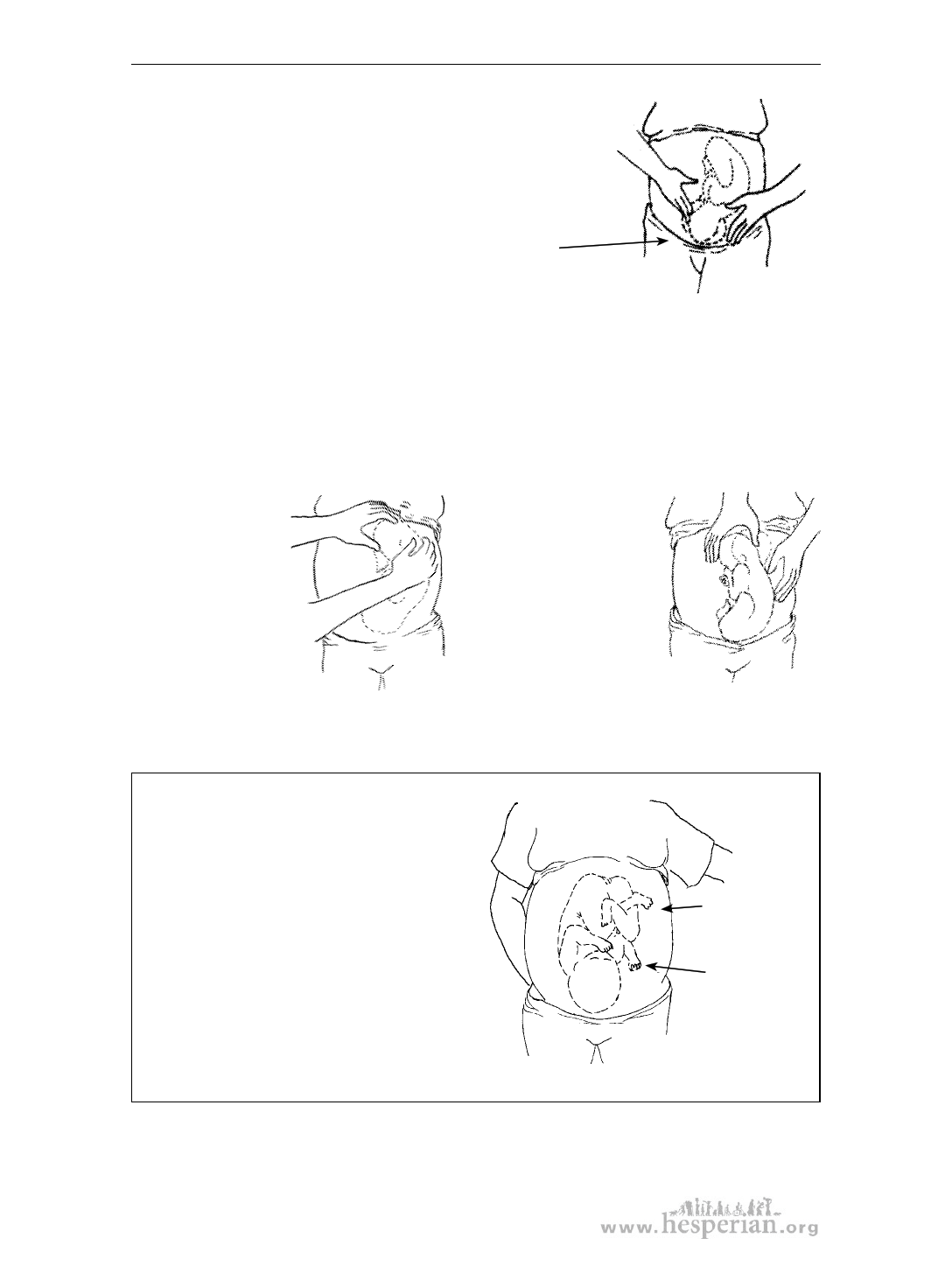
Chapter 8: Prenatal checkups
2. If the lower part of the baby is not too deep in
the mother’s pelvis, try moving that part of the
baby from side to side.
If moving the lower part of the baby
makes its whole back move, then the
baby may be breech. If the back does not
move, then the baby may be head down.
3. Now feel the top of the mother’s womb. Does it feel round and hard, like a
head? Or is it a different shape — like a bottom, a back, or legs? If the top of
the womb feels more like a head than what you felt in the mother’s lower
belly, the baby may be breech.
4. Put one hand on the baby’s back. At the same time, with your other hand,
push the top end of the baby gently sideways.
If the whole
back moves
when you
move the top
end, the baby
is probably in
a head-down
position.
If the back stays where it is
while you move the
upper part of the
baby, you may be
moving the head
(because the neck
can bend, the back
stays in place). If you
are moving the head,
the baby is breech.
Page 142 has more information on breech babies during pregnancy.
If the baby is breech at the time of birth, see page 215.
As you feel the mother’s belly, try to
imagine the different positions the
baby might be in. Imagine where the
baby’s hands and legs might be.
Imagine how each position would feel
to the mother when the baby kicks.
Then ask the mother where she feels
the strongest kicks and where she feels
smaller movements. Is this where you
think the legs and hands probably are?
If not, you may not have figured out
the baby’s position correctly.
Feet and
knees make
big kicks.
Hands make
smaller
movements.
When you check the baby’s position, you might think you feel 2 heads or
2 bottoms. The mother may have twins. See page 143.
138
A Book for Midwives (2010)